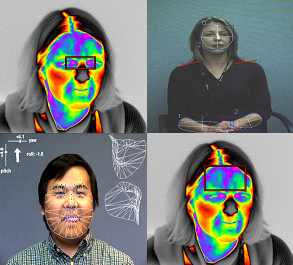Airport security
Airport security refers to the measures and methods used to protect passengers, staff, aircraft, and airport property from accidental/malicious harm, crime, and other threats. Airport security is a comprehensive concept that encompasses various protocols, technologies, and strategies to prevent terrorism, smuggling, and other illegal activities.
Overview[edit | edit source]
Airport security is implemented through a combination of manpower, technology, and physical barriers. The primary goal is to ensure the safety of air travel by preventing dangerous items or individuals from boarding aircraft. This involves screening passengers and their luggage for prohibited items, such as weapons, explosives, and flammable substances.
History[edit | edit source]
The history of airport security has evolved significantly over the years, especially in response to acts of terrorism and hijackings. The 1970s saw a rise in aircraft hijackings, leading to the implementation of metal detectors and the screening of passengers and their carry-on baggage. The tragic events of September 11, 2001, marked a turning point, leading to the creation of the Transportation Security Administration (TSA) in the United States and the introduction of stricter security measures worldwide, including enhanced passenger screening and the reinforcement of cockpit doors.
Screening Processes[edit | edit source]
The screening process at airports typically involves several steps:
- Passenger Screening: Passengers pass through metal detectors, and full-body scanners (Advanced Imaging Technology) to detect metallic and non-metallic threats.
- Luggage Screening: Checked luggage is screened using X-ray machines and Explosive Detection Systems (EDS) to identify prohibited items.
- Behavioral Detection: Security personnel may also employ behavioral detection techniques to identify potential threats based on passengers' behavior.
- Document Verification: Verification of travel documents to ensure the identity of passengers.
Technologies Used[edit | edit source]
- Metal Detectors: Used to screen passengers for metallic objects.
- Full-Body Scanners: Use millimeter wave technology or backscatter X-ray to detect objects concealed under clothing.
- X-Ray Machines: Used for screening carry-on and checked luggage.
- Explosive Trace Detection (ETD): Devices that detect traces of explosives on luggage or passengers.
- Biometric Verification: The use of fingerprints, facial recognition, or retinal scanning to verify passenger identities.
Challenges and Criticisms[edit | edit source]
Airport security faces several challenges, including maintaining passenger privacy, managing long queues, and dealing with false alarms. Critics argue that some measures, such as full-body scanners, invade privacy. There are also concerns about racial profiling and the effectiveness of certain security practices.
Future of Airport Security[edit | edit source]
The future of airport security looks towards enhancing efficiency and effectiveness while minimizing inconvenience to passengers. This includes the adoption of more advanced technologies, such as artificial intelligence (AI) and machine learning, for threat detection and streamlined security processes.
Search WikiMD
Ad.Tired of being Overweight? Try W8MD's physician weight loss program.
Semaglutide (Ozempic / Wegovy and Tirzepatide (Mounjaro / Zepbound) available.
Advertise on WikiMD
|
WikiMD's Wellness Encyclopedia |
| Let Food Be Thy Medicine Medicine Thy Food - Hippocrates |
Translate this page: - East Asian
中文,
日本,
한국어,
South Asian
हिन्दी,
தமிழ்,
తెలుగు,
Urdu,
ಕನ್ನಡ,
Southeast Asian
Indonesian,
Vietnamese,
Thai,
မြန်မာဘာသာ,
বাংলা
European
español,
Deutsch,
français,
Greek,
português do Brasil,
polski,
română,
русский,
Nederlands,
norsk,
svenska,
suomi,
Italian
Middle Eastern & African
عربى,
Turkish,
Persian,
Hebrew,
Afrikaans,
isiZulu,
Kiswahili,
Other
Bulgarian,
Hungarian,
Czech,
Swedish,
മലയാളം,
मराठी,
ਪੰਜਾਬੀ,
ગુજરાતી,
Portuguese,
Ukrainian
Medical Disclaimer: WikiMD is not a substitute for professional medical advice. The information on WikiMD is provided as an information resource only, may be incorrect, outdated or misleading, and is not to be used or relied on for any diagnostic or treatment purposes. Please consult your health care provider before making any healthcare decisions or for guidance about a specific medical condition. WikiMD expressly disclaims responsibility, and shall have no liability, for any damages, loss, injury, or liability whatsoever suffered as a result of your reliance on the information contained in this site. By visiting this site you agree to the foregoing terms and conditions, which may from time to time be changed or supplemented by WikiMD. If you do not agree to the foregoing terms and conditions, you should not enter or use this site. See full disclaimer.
Credits:Most images are courtesy of Wikimedia commons, and templates, categories Wikipedia, licensed under CC BY SA or similar.
Contributors: Prab R. Tumpati, MD




